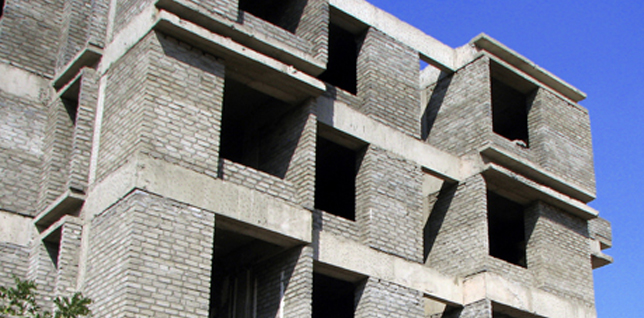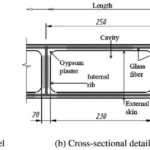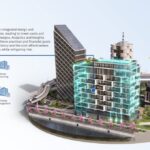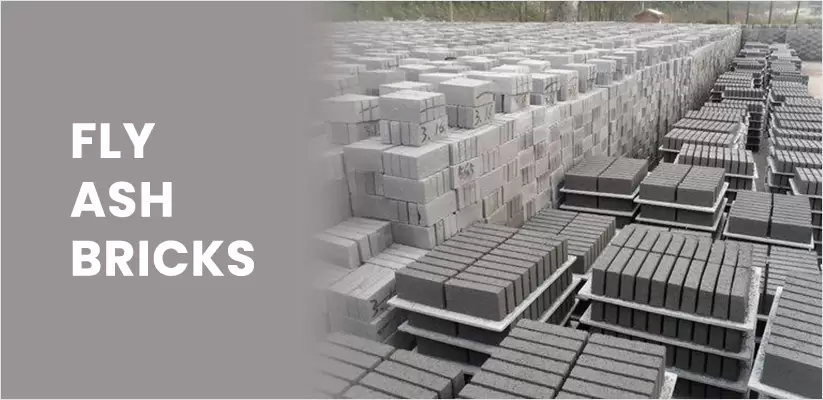
The construction industry has always faced challenges related to sustainability, resource depletion, and waste management. One of the most exciting innovations in sustainable building materials is fly ash bricks, which are rapidly gaining popularity for their strength, durability, and environmentally friendly nature. In this blog, we will explore what fly ash bricks are, their benefits, and how they are transforming the construction industry.
What Are Fly Ash Bricks?
Fly ash bricks are a type of building material made primarily from fly ash, a byproduct of coal combustion in power plants. Fly ash is combined with other materials such as lime, gypsum, and water to form bricks that are then compressed and cured. These bricks are lightweight, durable, and offer excellent insulation properties, making them a great alternative to traditional clay bricks.
Fly ash bricks are considered a form of autoclaved aerated concrete (AAC), although they are not as porous as AAC. They are manufactured using a combination of industrial waste products and natural materials, resulting in a product that is both cost-effective and environmentally sustainable.
Benefits of Fly Ash Bricks
- Eco-Friendly: One of the primary reasons fly ash bricks are considered an eco-friendly building material is that they help recycle industrial waste, such as fly ash, which would otherwise be discarded in landfills. By repurposing this waste material, fly ash bricks reduce the environmental impact of construction and help conserve natural resources like clay and soil.
- Energy Efficiency: Fly ash bricks offer excellent thermal insulation properties, which help maintain comfortable indoor temperatures throughout the year. This reduces the need for artificial heating and cooling, leading to lower energy consumption and reduced carbon emissions. Buildings constructed with fly ash bricks tend to be more energy-efficient, saving homeowners and businesses money on energy bills.
- Strength and Durability: Despite being lightweight, fly ash bricks are strong and durable. They have high compressive strength, which means they can withstand heavy loads and provide long-lasting structural support. These bricks are resistant to moisture, termites, and other environmental factors, making them ideal for both residential and commercial buildings.
- Fire Resistance: Fly ash bricks are fire-resistant, which adds an additional layer of safety to buildings. They do not emit harmful gases or toxic fumes when exposed to fire, making them a safer choice for construction in fire-prone areas.
- Cost-Effectiveness: Fly ash bricks are often more affordable than traditional clay bricks due to the low cost of raw materials. The use of fly ash, a waste product, significantly reduces the overall cost of production, making fly ash bricks an economical choice for builders and contractors. Additionally, their lightweight nature reduces transportation costs, further lowering the overall expenses of a construction project.
- Lightweight and Easy to Handle: Fly ash bricks are lighter than traditional clay bricks, which makes them easier to handle and install. This reduces labor costs and accelerates construction timelines, making them a preferred choice for large-scale projects. Their lightweight nature also reduces the load on the building’s foundation.
- Improved Sound Insulation: Fly ash bricks provide better sound insulation compared to traditional bricks, making them an excellent choice for buildings in noisy environments. Whether used for residential homes, offices, or public spaces, fly ash bricks help create quieter, more comfortable indoor spaces.
Applications of Fly Ash Bricks
- Residential Buildings: Fly ash bricks are widely used in the construction of homes, apartments, and villas due to their cost-effectiveness, durability, and energy efficiency. These bricks help create homes that are not only strong and long-lasting but also energy-efficient, leading to lower utility bills for homeowners.
- Commercial Buildings: Fly ash bricks are also ideal for commercial buildings such as offices, shopping malls, schools, and hospitals. Their strength, fire resistance, and energy-efficient properties make them perfect for both interior and exterior walls in commercial settings.
- Infrastructure Projects: Fly ash bricks are used in infrastructure projects such as bridges, roads, and government buildings. Their ability to withstand heavy loads and harsh weather conditions makes them an ideal choice for large-scale construction projects.
- Paving and Landscaping: Fly ash bricks can be used for outdoor paving, landscaping, and other decorative features. Their ability to withstand environmental wear and tear, coupled with their aesthetic appeal, makes them a popular choice for urban planning and landscape design.
The Environmental Impact of Fly Ash Bricks
The environmental benefits of fly ash bricks cannot be overstated. In addition to reducing the need for natural resources, such as clay, their production helps divert a significant amount of fly ash from landfills. The widespread adoption of fly ash bricks could significantly reduce the environmental footprint of the construction industry, which is one of the largest contributors to waste and carbon emissions.
Fly ash bricks also contribute to sustainable development by reducing the need for traditional brick kilns, which are energy-intensive and contribute to deforestation and air pollution. By utilizing industrial waste in the production process, fly ash bricks help promote a circular economy and reduce the overall environmental impact of construction.
Challenges and Considerations
While fly ash bricks offer numerous advantages, there are some challenges to consider:
- Availability of Raw Materials: The availability of high-quality fly ash can be a limiting factor in certain regions, as it depends on the presence of coal-fired power plants. However, as renewable energy sources become more prevalent, the supply of fly ash may decrease, requiring alternative waste products for brick production.
- Initial Investment: The machinery and equipment required for the production of fly ash bricks can be expensive, which may deter small-scale manufacturers from entering the market. However, the long-term savings in material costs and energy efficiency often outweigh the initial investment.
The Future of Fly Ash Bricks
As the construction industry continues to prioritize sustainability, fly ash bricks are expected to play an increasingly important role in green building practices. With their cost-effectiveness, durability, and environmental benefits, fly ash bricks are poised to become a mainstream material in residential, commercial, and infrastructure projects worldwide.
With continued research and innovation in manufacturing techniques, the quality and availability of fly ash bricks are likely to improve, making them even more accessible and affordable. As more builders and architects recognize the advantages of fly ash bricks, their adoption is set to grow, paving the way for a more sustainable and eco-friendly future in construction.
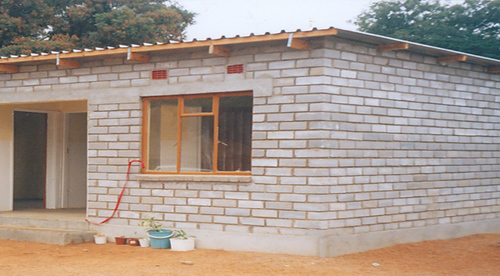
Fly Ash Bricks: Sustainable Construction for a Greener Future
The growing need for sustainable construction materials has led to the development of various innovative building products, with fly ash bricks standing out as an eco-friendly alternative to traditional clay bricks. Made from fly ash, a waste product from coal-fired power plants, these bricks are gaining popularity for their strength, cost-effectiveness, and environmental benefits. In this blog, we’ll explore why fly ash bricks are considered the future of sustainable construction and how they are contributing to a greener, more sustainable built environment.
What Are Fly Ash Bricks?
Fly ash bricks are manufactured using fly ash, a byproduct of the combustion of coal in power plants, mixed with other materials such as lime, gypsum, and water. The resulting mixture is pressed into brick molds, compressed, and cured to form solid, durable bricks. These bricks are lightweight, energy-efficient, and offer a range of benefits over traditional clay bricks, making them an attractive option for eco-conscious builders and homeowners.
The Environmental Benefits of Fly Ash Bricks
- Waste Utilization: Fly ash is a major byproduct of coal combustion and is typically stored in landfills. By repurposing fly ash into bricks, we help reduce waste and minimize the environmental impact of landfills. This is a prime example of the circular economy, where waste materials are recycled and given a second life as useful products.
- Reduction in Raw Material Use: The production of traditional clay bricks requires vast amounts of natural resources, including fertile soil and clay. Fly ash bricks, on the other hand, utilize industrial waste and reduce the need for clay extraction, thereby helping conserve natural resources and preventing soil erosion.
- Energy Efficiency: Fly ash bricks have excellent thermal insulation properties, which help reduce the need for artificial heating and cooling in buildings. This leads to significant energy savings over time, contributing to a building’s overall sustainability and reducing its carbon footprint.
- Lower Carbon Emissions: The manufacturing process of fly ash bricks is less energy-intensive compared to the production of traditional clay bricks, which require high temperatures to fire the bricks in kilns. As a result, fly ash brick production generates fewer carbon emissions, making it a more environmentally friendly option.
- Durability and Longevity: Fly ash bricks are resistant to moisture, termites, and weathering, which makes them a durable and low-maintenance option for construction. Their long lifespan means fewer resources will be needed for repairs and replacements, further contributing to sustainability.
Applications of Fly Ash Bricks
Fly ash bricks are versatile and can be used for a variety of applications in both residential and commercial construction:
- Wall Construction: Fly ash bricks are commonly used for building load-bearing and non-load-bearing walls. Their lightweight nature and strength make them an ideal material for both interior and exterior walls in residential and commercial buildings.
- Paving and Landscaping: Fly ash bricks can also be used in outdoor paving and landscaping projects. Their durability and weather resistance make them ideal for pathways, driveways, and garden walls.
- Infrastructure Projects: Fly ash bricks are being increasingly used in large-scale infrastructure projects, including roads, bridges, and government buildings. Their strength and fire resistance make them a suitable choice for high-traffic and high-risk areas.
- Sustainable Housing: In the growing field of green building, fly ash bricks are an ideal material for constructing energy-efficient homes. They contribute to better insulation, reducing energy consumption and lowering utility costs.
The Future of Fly Ash Bricks
As demand for sustainable and eco-friendly building materials continues to rise, fly ash bricks are well-positioned to become a mainstream choice for construction. With their low environmental impact, energy efficiency, and durability, fly ash bricks are contributing to a shift towards more sustainable building practices in both residential and commercial construction.
By utilizing industrial waste and offering a cost-effective alternative to traditional materials, fly ash bricks help pave the way for greener, more sustainable urban development. As production methods improve and the availability of fly ash increases, these bricks are likely to become a cornerstone of sustainable construction in the future.
Fly ash bricks are not only a smart choice for modern builders but also a significant step forward in the quest for more sustainable construction materials. By recycling waste and reducing the use of natural resources, fly ash bricks represent a cleaner, greener future for the construction industry.
